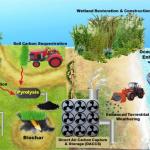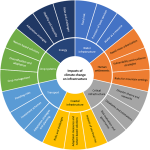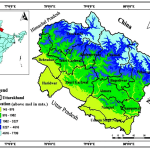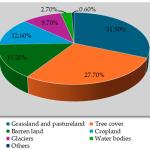Future Projections:
This section presents projections of future climate change based on different scenarios of greenhouse gas emissions.
It includes projections of:
Future temperature increases.
Sea level rise.
Changes in precipitation and extreme weather events.
Impacts on ecosystems, agriculture, and human societies.
These projections often come with varying levels of confidence.Purpose of the "Future Projections" Section:
- Informing Policy Decisions:
- Projections help policymakers understand the potential consequences of different emission pathways and make informed decisions about mitigation and adaptation.
- Risk Assessment:
- They allow for the assessment of future climate risks and vulnerabilities, enabling proactive planning to minimize potential damage.
- Raising Awareness:
- Projections help to communicate the urgency of climate action to the public and stakeholders.
Key Elements of Future Projections:
- Scenarios of Greenhouse Gas Emissions:
- Reports typically present projections based on different scenarios, ranging from low-emission pathways (consistent with limiting warming to well below 2°C) to high-emission pathways (business-as-usual).
- These scenarios are based on assumptions about future economic growth, technological development, and policy decisions.
- Projections of Future Temperature Increases:
- Models project the range of future temperature increases based on the different emission scenarios.
- Projections often include estimates of global average temperature increases, as well as regional variations.
- These projections will include best estimates, and likely ranges of temperature increases.
- Sea Level Rise Projections:
- Models project the range of future sea level rise, taking into account thermal expansion of seawater, melting of glaciers and ice sheets, and changes in land water storage.
- Projections often include estimates of global average sea level rise, as well as regional variations.
- These projections can be very important to coastal communities.
- Changes in Precipitation and Extreme Weather Events:
- Models project changes in precipitation patterns, including increases or decreases in rainfall in different regions.
- They also project changes in the frequency and intensity of extreme weather events, such as heatwaves, droughts, floods, and storms.
- These projections are very important to agriculture.
- Impacts on Ecosystems, Agriculture, and Human Societies:
- Models project the potential impacts of future climate change on various sectors, including:
- Ecosystems and biodiversity (e.g., species extinctions, coral bleaching).
- Agriculture and food security (e.g., crop yields, food prices).
- Human health (e.g., heat-related illnesses, spread of diseases).
- Water resources (e.g., water scarcity, flooding).
- Infrastructure (e.g., damage to buildings, roads, and bridges).
- These impacts can have huge economic consequences.
- Levels of Confidence:
- Projections are often presented with varying levels of confidence, reflecting the uncertainties associated with climate modeling and future emission scenarios.
- Confidence levels are based on factors such as the agreement among different models, the availability of observational data, and the understanding of physical processes.
- It is important to remember that all models have some level of uncertainty.
Key Considerations:
- Uncertainty:
- Climate projections are inherently uncertain, due to the complexity of the climate system and the difficulty of predicting future human behavior.
- Reports will typically acknowledge and quantify these uncertainties.
- Regional Variations:
- Climate change impacts will vary significantly across different regions of the world.
- Reports will often include regional projections to provide more localized information.
- Irreversibility:
- Some climate change impacts, such as sea level rise and species extinctions, may be irreversible on human timescales.
- Reports will highlight the potential for irreversible changes and the importance of taking action to avoid them.
In essence, the "Future Projections" section provides a glimpse into the potential consequences of our current actions, highlighting the urgency of transitioning to a more sustainable future.










